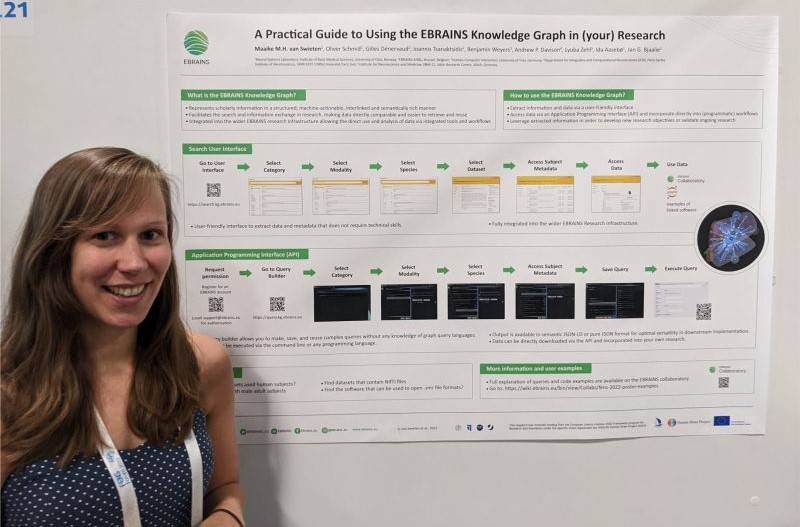A Practical Guide to Using the EBRAINS Knowledge Graph in (your) Research
Scientific articles are mostly published as text files containing unstructured and semi-structured information. Consequently, important information is typically deeply hidden in documents which severely limits the possibilities to automatically process and reuse scholarly knowledge. One approach to make information explicit and directly usable is to transform this into a standardised format and store it in a knowledge graph. This allows scholarly knowledge to be represented in a structured, machine-actionable, interlinked and semantically rich manner. The EBRAINS Knowledge Graph was developed to facilitate the search and information exchange in research, so that research results across different domains become directly comparable and easier to retrieve and reuse.
Here, we provide a practical guide to extracting information from the EBRAINS Knowledge Graph using a user-friendly interface as well as a more advanced programmatic route via an Application Programming Interface (API). We also provide concrete examples on how the extracted information can be leveraged in order to develop new research objectives as well as validate ongoing research. The EBRAINS Knowledge Graph is integrated in the wider EBRAINS research infrastructure as a part of the EBRAINS Data and Knowledge services for sharing and finding research data and models. Data found through these services can be directly used and analysed via the various integrated tools and analysis workflows. The EBRAINS Knowledge Graph is a valuable machine-actionable and FAIR (Findable, Accessible, Interoperable and Reusable) resource for discovery-based and hypothesis-driven research as it already contains a wide variety of neuroscience data types, models and software.
Access the user examples here and Try It Yourself!

Enjoy Reading This Article?
Here are some more articles you might like to read next: